Abstract
MnO2 reduction by aerobic growing cultures of Bacillus 29 and coccus 32, isolated from ferromanganese nodules, was assessed for 7 days. A 1-day lag was observed before the onset of MnO2 reduction by either culture. Addition of HgCl2 to a final concentration of about 10-3 M caused a rapid cessation of MnO2 reduction by the growing cultures. Neither culture reduced MnO2 when grown under continued anaerobiosis from the start of an experiment. However, if conditions were made anaerobic after MnO2 reduction was initiated, reduction continued at a rate only slightly lower than that under aerobic conditions. Resting-cell cultures reduced MnO2 equally well aerobically and anaerobically, provided that ferricyanide was present to serve as electron carrier. These findings showed that oxygen is needed for culture adaptation to MnO2 reduction, and that oxygen does not interfere with microbial MnO2 reduction itself. Both cultures caused sharp drops in the pH of the medium during MnO2 reduction: with coccus 32, during the entire incubation time; with Bacillus 29, for the first 3 days. The Eh of the medium fluctuated with either culture and never fell below 469 mv with Bacillus 29 and below 394 mv with coccus 32. The rates of glucose consumption and Mn2+ release by Bacillus 29 and coccus 32 were fairly constant, but the rates of lactate and pyruvate production were not. Although acid production undoubtedly helped in the reduction of pyrolusite (MnO2) by the bacteria, it did not appear to be important in the reduction of manganese oxide in ferromanganese nodules, as shown by the results with a nodule enrichment.
Full text
PDF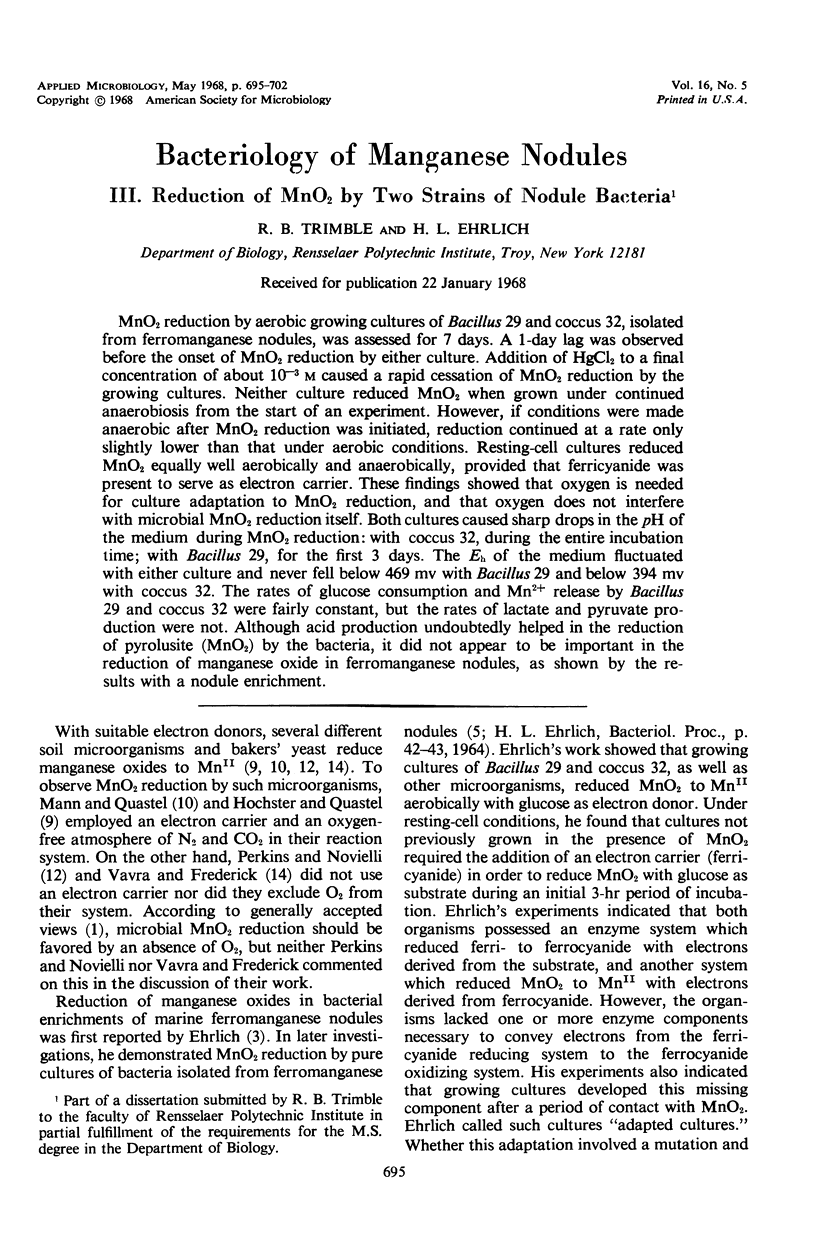
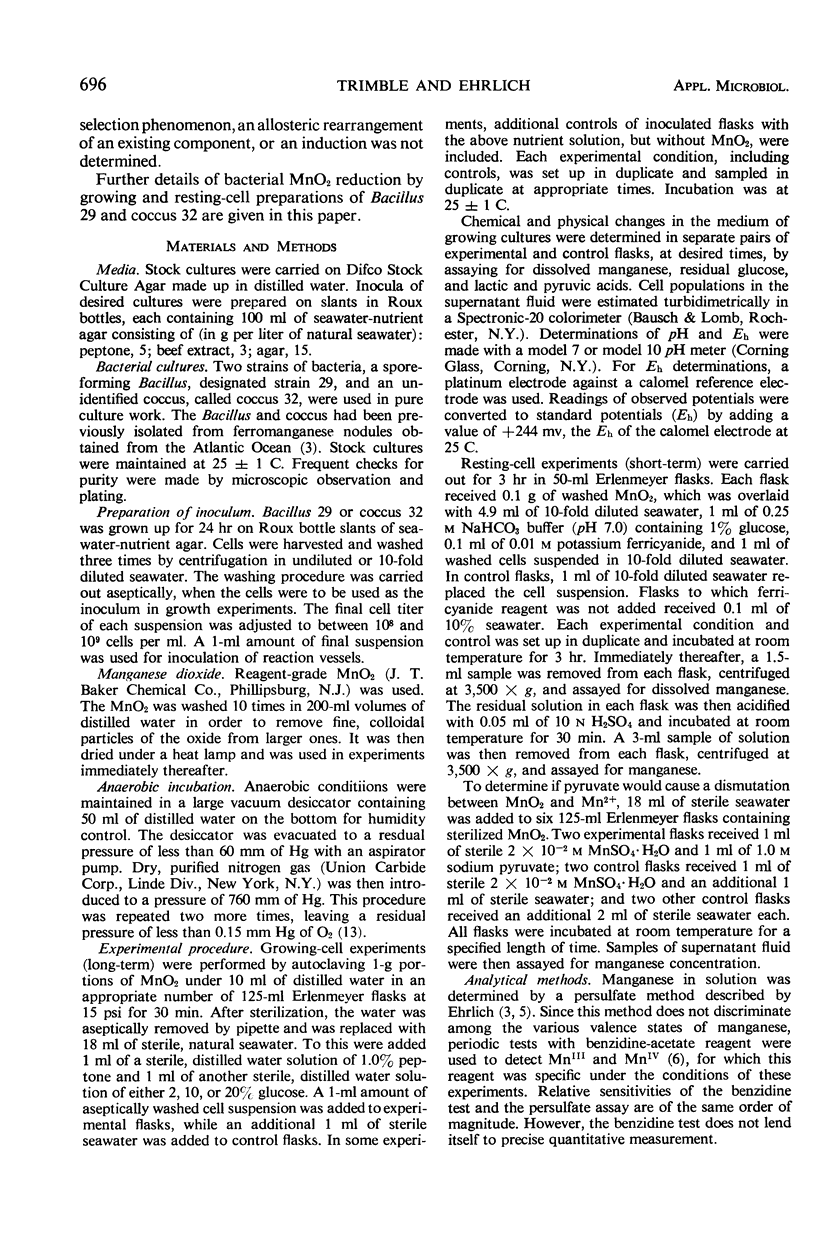
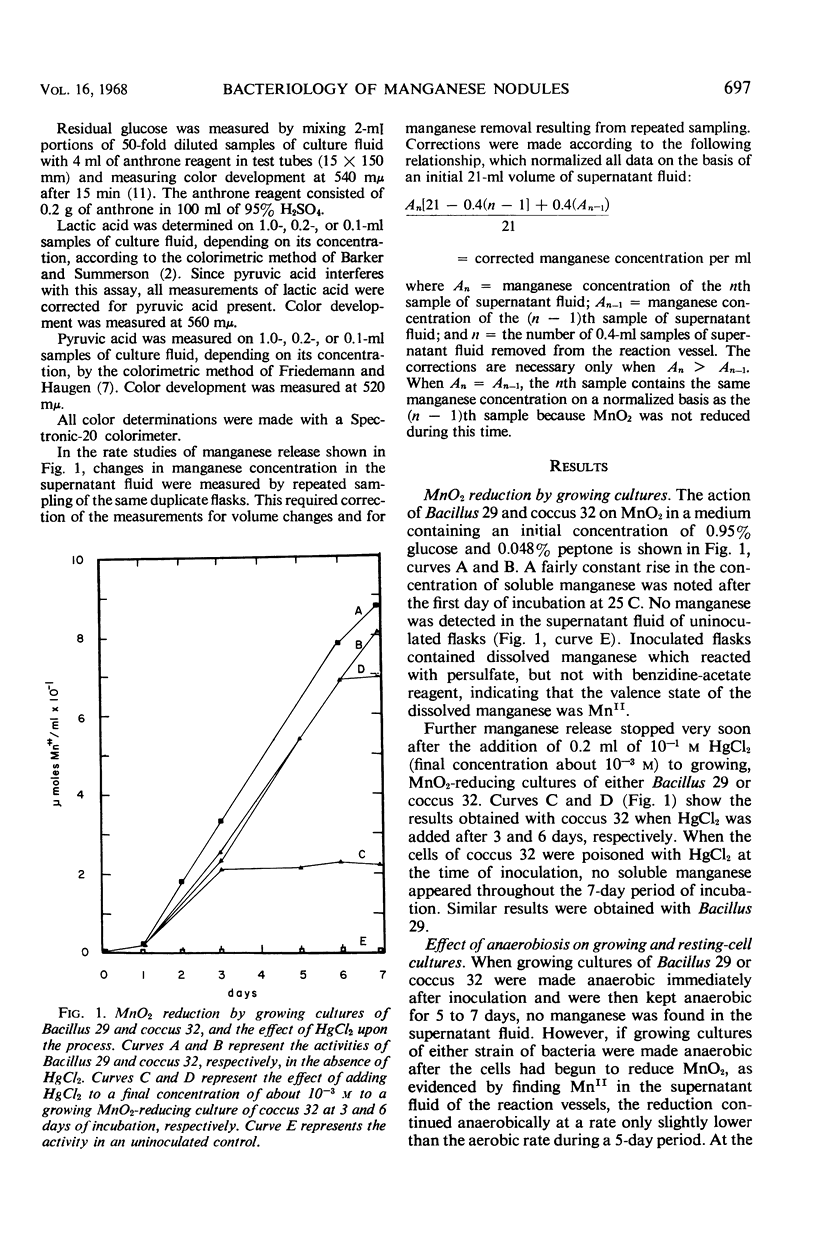
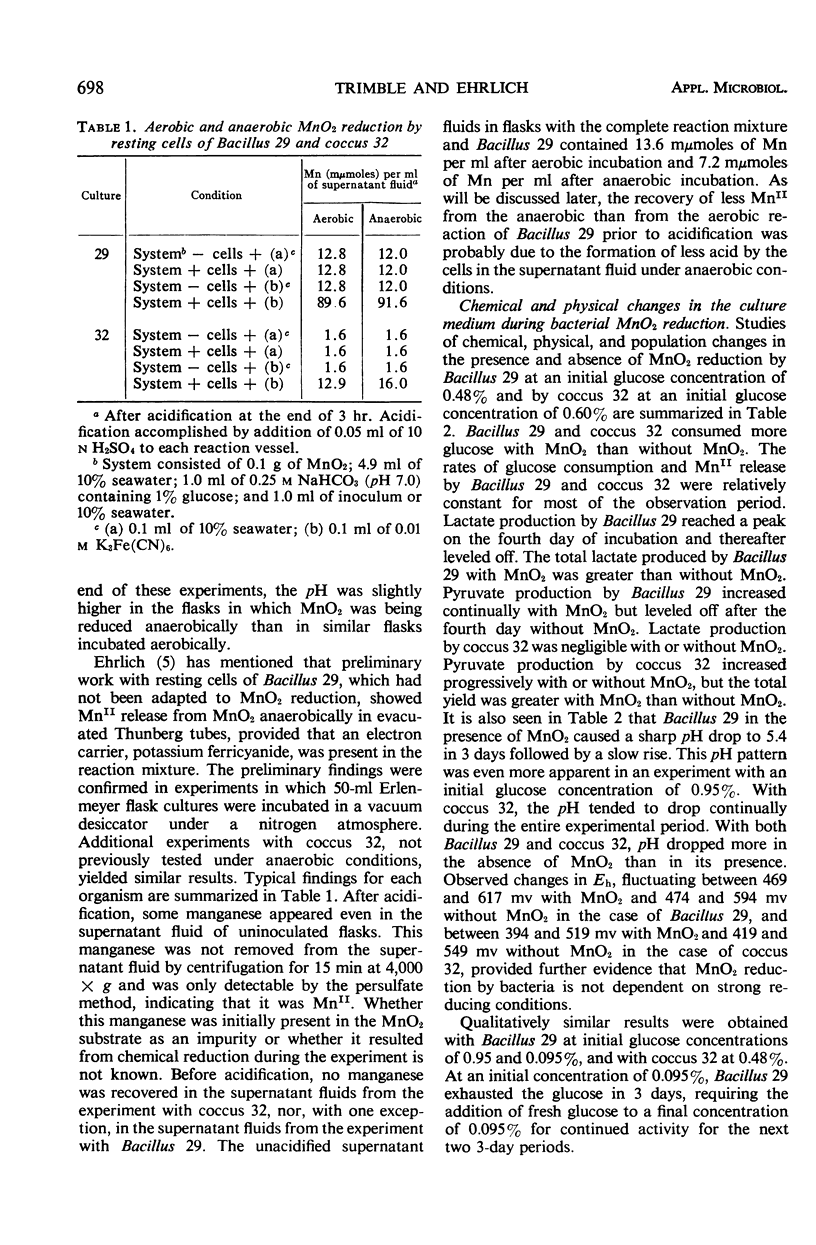
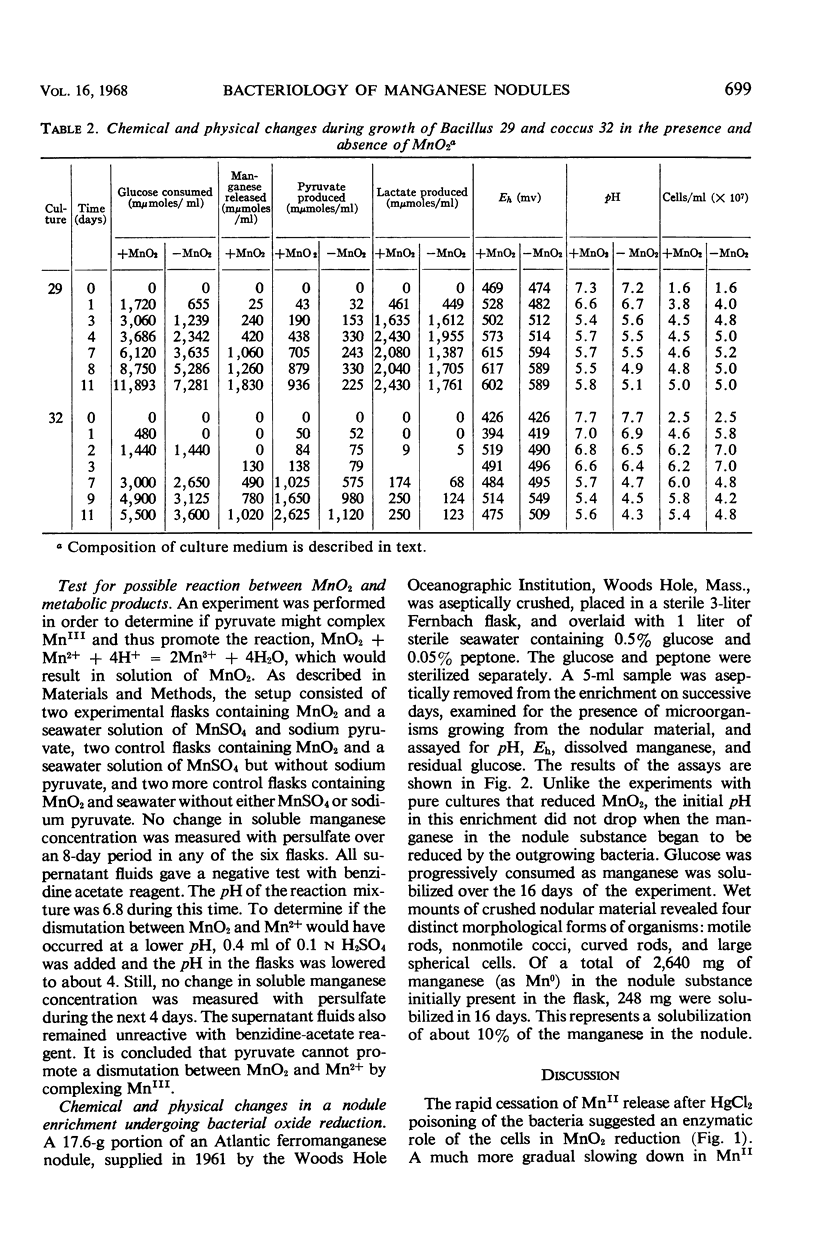
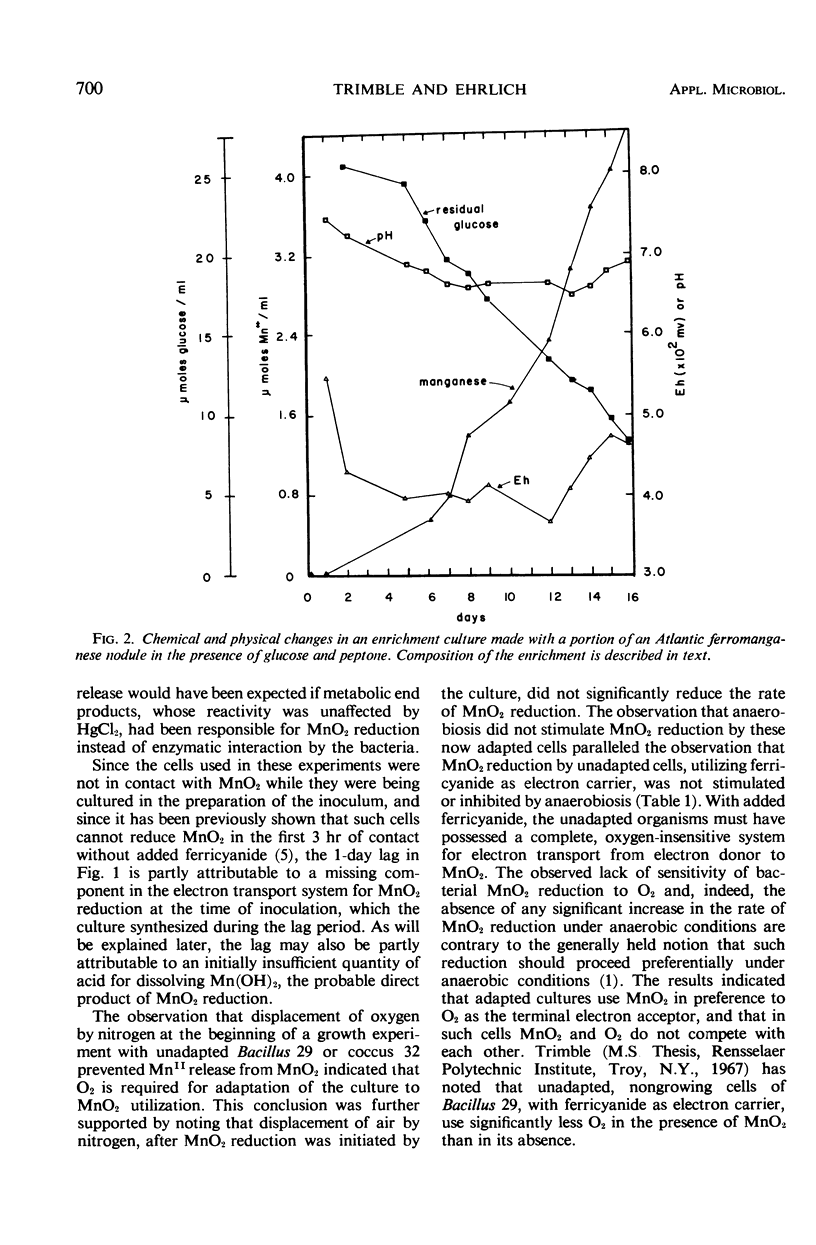
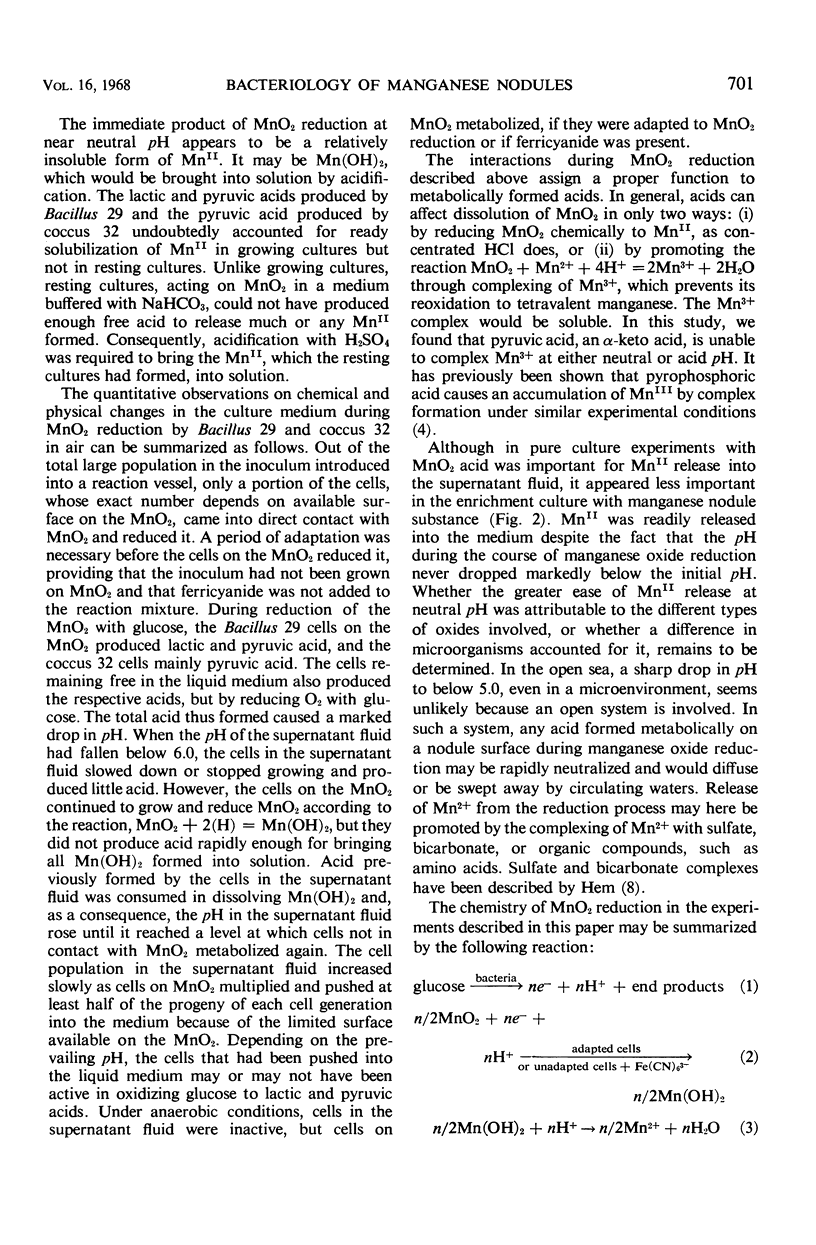
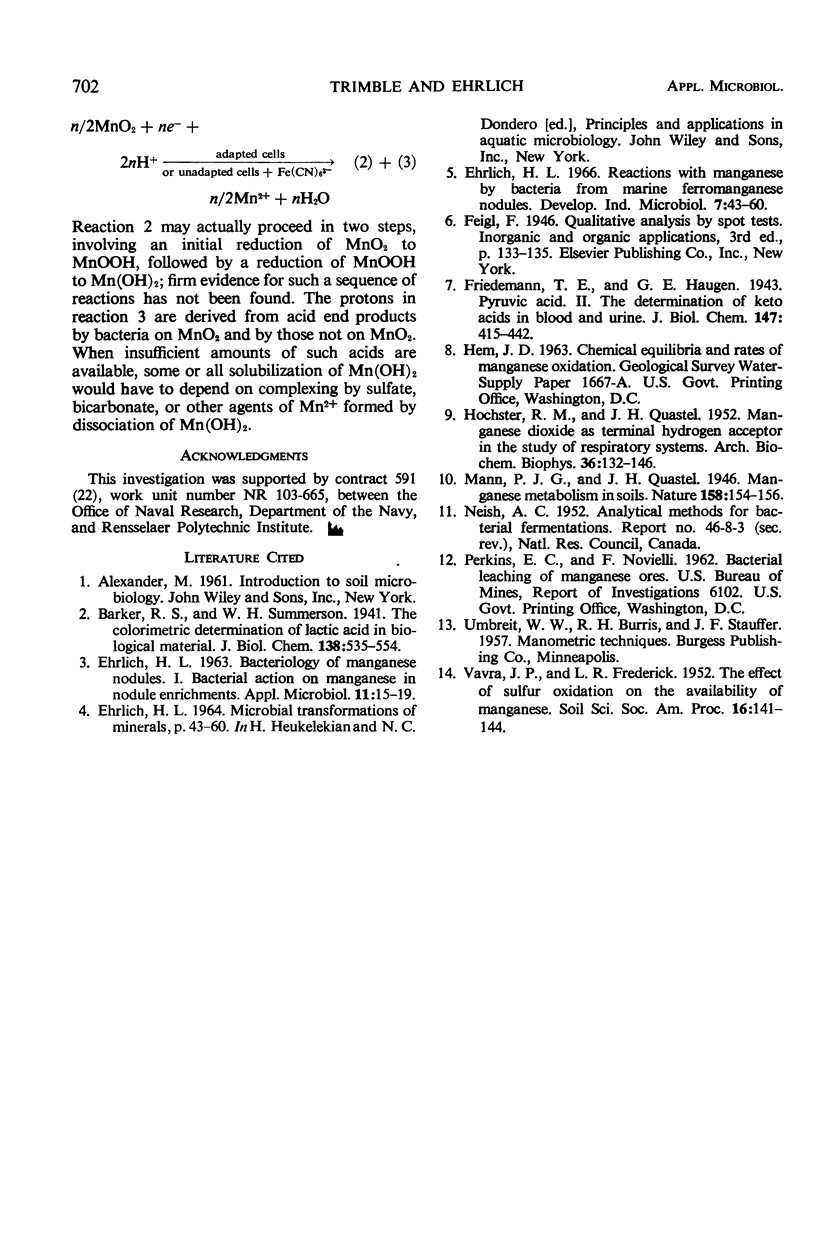
Selected References
These references are in PubMed. This may not be the complete list of references from this article.
- Ehrlich H. L. Bacteriology of Manganese Nodules: I. Bacterial Action on Manganese in Nodule Enrichments. Appl Microbiol. 1963 Jan;11(1):15–19. doi: 10.1128/am.11.1.15-19.1963. [DOI] [PMC free article] [PubMed] [Google Scholar]
- HOCHSTER R. M., QUASTEL J. H. Manganese dioxide as a terminal hydrogen acceptor in the study of respiratory systems. Arch Biochem Biophys. 1952 Mar;36(1):132–146. doi: 10.1016/0003-9861(52)90385-8. [DOI] [PubMed] [Google Scholar]


